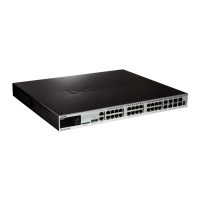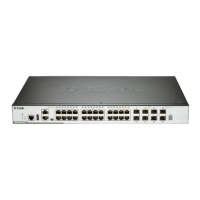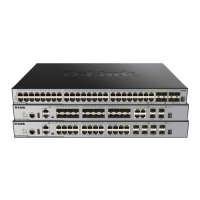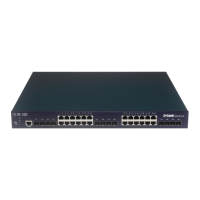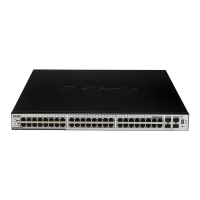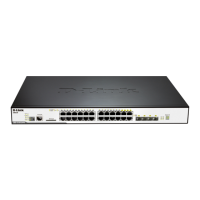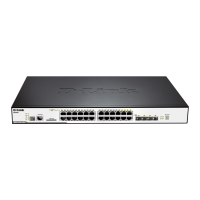xStack
®
DGS-3620 Series Layer 3 Managed Stackable Gigabit Switch Web UI Reference Guide
96
Type This drop-down menu allows users to select between Static and LACP (Link Aggregation
Control Protocol). LACP allows for the automatic detection of links in a Port Trunking Group.
Choose the Master Port for the trunk group using the drop-down menu.
State Use the drop-down menu to toggle between Enabled and Disabled. This is used to turn a
port trunking group on or off. This is useful for diagnostics, to quickly isolate a bandwidth
intensive network device or to have an absolute backup aggregation group that is not under
Choose the members of a trunked group. Up to eight ports can be assigned to a group.
Shows the ports that are currently forwarding packets.
Click the Apply button to accept the changes made.
Click the Clear All button to clear out all the information entered.
Click the Add button to add a new entry based on the information entered.
NOTE: The maximum number of ports that can be configured in one Static Trunk or LACP Group are
8 ports.
LACP Port Settings
In conjunction with the Trunking window, users can create port trunking groups on the Switch. Using the following
window, the user may set which ports will be active and passive in processing and sending LACP control frames.
To view the following window, click L2 Features > Link Aggregation > LACP Port Settings, as show below:
Figure 4-43 LACP Port Settings window
The fields that can be configured are described below:
Parameter Description
A consecutive group of ports may be configured starting with the selected port.
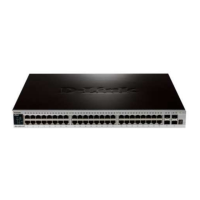
